Our three weeks exploring the Whitsunday Islands came to an end and it was time to move on. This area of the Pacific is part of the cyclone belt and, for insurance reasons, between November and May, we must be south of it. As it was still the end of October, we were early in the season, but already the weather had been unpredictable. We had been watching a cyclone form over northern Vanuatu and it was uncertain as to where it would make landfall in Australia. We needed to head further south.
Eventually, the southerly winds changed to northerlies and, although they were too light for sailing (only Force 2: 4-6 knots), we decided that a motor to Mackay was in order! Setting off at first light, we made our way the 65nm to Mackay and, after a 12 hour motor, we arrived at Mackay Marina.
Waiting for the southerlies to pass by again, we spent a few days in the marina ticking off a couple of boat jobs, including starting to repair the caulking on the decks. Yet again, when the northerlies arrived, they were light (Force 2), so we continued to have to motor south.
A passage of 70nm got us to the island of Middle Percy. This turned out to be an amazing, little island and quickly became one of our favourites. It was not too busy and had good holding beside long sandy beaches. Whilst there, we managed a catch up with friends and a trek over to the famous ‘A Frame’ – a fascinating timber framed building crammed full of mementoes from years of visiting cruisers. This Aladdin’s Cave was a cool place to chill from the midday sun.
Leaving Middle Percy, we finally had the wind to sail. Force 4 (11-16 knots) from the north/north east. Along with sunny weather and calm seas, we had perfect sailing conditions. We made the most of it, sailing 110nm in good time to our next stop – Great Keppel Island. We found this island disappointing after the joys of Middle Percy. It was busy with day trippers and the abandoned resort here was a depressing sight.
Not wanting to stay at Great Keppel long, we were pleased that the stronger winds continued. Reaching Force 5 (17-21 knots) we were hoping for a speedy sail down to Hervey Bay. How wrong we were! The stronger winds were from an east/south east direction making a direct route sail impossible. Refusing to motor in such good wind, we decided to tack. We had an excellent sail, but instead of a passage of 170nm, we did 260nm – an extra day at sea!
The journey was not boring though, as travelling further south meant that the coast became busier with several river port entrances to navigate. Passing Gladstone with ‘tanker parking’ and Bundaberg at night kept us on our toes and entailed a sharp lookout .
Finally, arriving at Hervey Bay, we booked into Great Sandy Straits Marina, planning to stay for a week and catch up with more friends. This was a lovely break for us and it was great to have locals to show us around.
Hervey Bay was another chilled out town and we spent a pleasant afternoon browsing the arts and craft market and wandering along the water front and the extra long pier.
We also spent several hours at the Historical Village and Museum. A quaint place in which volunteers have restored about 20 historic buildings to create a small village, complete with school, station, church and several businesses. It is well kept and provides an interesting snapshot of what life was like for the early settlers. It was the first time we have seen so many things we remember from our grandparents´ homes in a museum. We must be old!
Leaving Hervey Bay, we headed down the Great Sandy Straits between Fraser Island and the mainland. This was an interesting route as the 40nm passage is a collection of channels with many shoals and sandbanks to navigate. We needed to check our tide times carefully to ensure that we would have enough water under the keel in the shallower areas. We also needed to check the tidal direction, so that we had the 2/3 knots of flow with us, not against us.
Planning done, we left at Great Sandy Straits Marina at 5am and had 2 knots of tide assisting us on our motor south. We made excellent time and reached the shallowest point with 1.9m below the keel. Once through the shallows, the tide changed and took us the rest of the way. By lunchtime, we were safely anchored at Elbow Point where we spent the night to be ready for another early start the following day to cross Wide Bay Bar.
Many of the river entrances along the east coast have coastal bars. These are banks of sand and gravel deposited by waves and currents across the mouth of a bay. The bars can be dangerous to cross as the sand may move over time and also strong winds and large swell can make significant breaking waves.
Wide Bay Bar is judged as being one of the more challenging bars and expert local information is crucial for a safe crossing. Fortunately, there is an amazing free service along this coast to support sea farers. Tin Can Bay Volunteer Coastguards are part of this and can give up to date information about the weather and sea state. They even publish regularly updated waypoints to guide you over the bar.
Armed with plenty of information, we set off at 5am 8again!), arriving at the bar at 40 minutes before high tide. Even at this time, we only had 4m of water below the keel and a 2m swell. We definitely wouldn’t have wanted to do it near low tide with worse weather!
The bar crossing was was the start of a long day. Force 4 (11-16 knot) winds from the north east meant an excellent sail, with Escapade reaching speeds of up to 7 knots and we completed the 100nm in about 18 hours.
It was very dark when we arrived at Tangalooma in Moreton Bay. Not an ideal situation for anchoring somewhere new. However, the entrance to the anchorage was well charted and there were clear navigation buoys lit up to follow. All was going well until the moment when we were about to drop the anchor and we almost hit an unlit anchored boat. It was a good job that I was on the bow looking out!
After a great sleep, we were ready for a quick snorkel on the Tangalooma Wrecks. The fifteen wrecks here have been sunk deliberately to form a protective barrier for anchoring boats and are shallow enough to snorkel easily. On the morning that we were there, the good visibility meant it was the best snorkelling we had done since arriving in Australia. There were plenty of fish and we even spotted a ray and a turtle.
One of the best things that we did in Brisbane was to take a guided walking tour with a Brisbane greeter. This excellent service is free and staffed by local volunteers who are passionate and knowledgeable about the city. John, our greeter, showed us things we would have missed had we walked the city on our own.
Finally, no trip to Brisabne would be complete without a beer or two overlooking the Story Bridge.
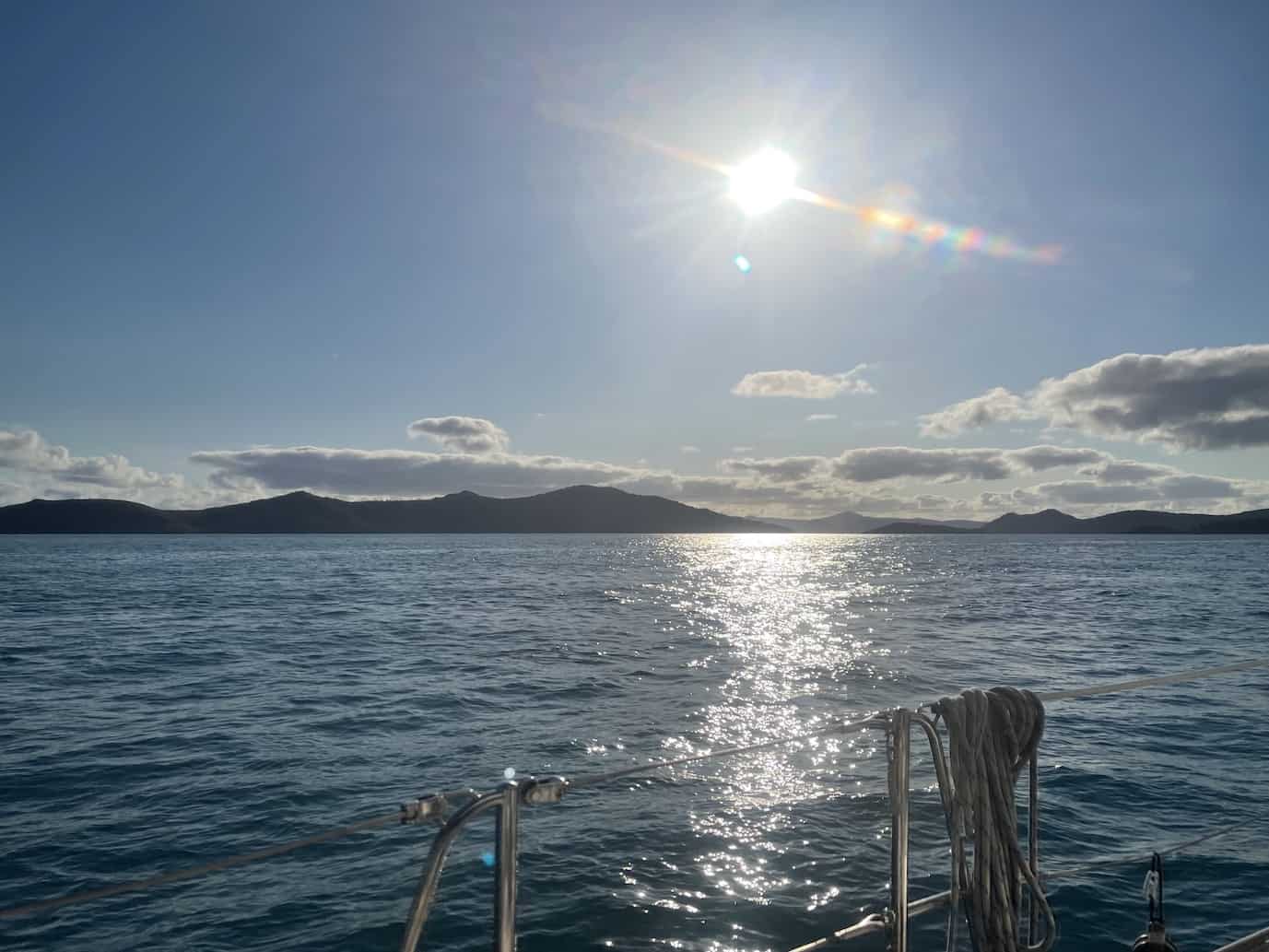
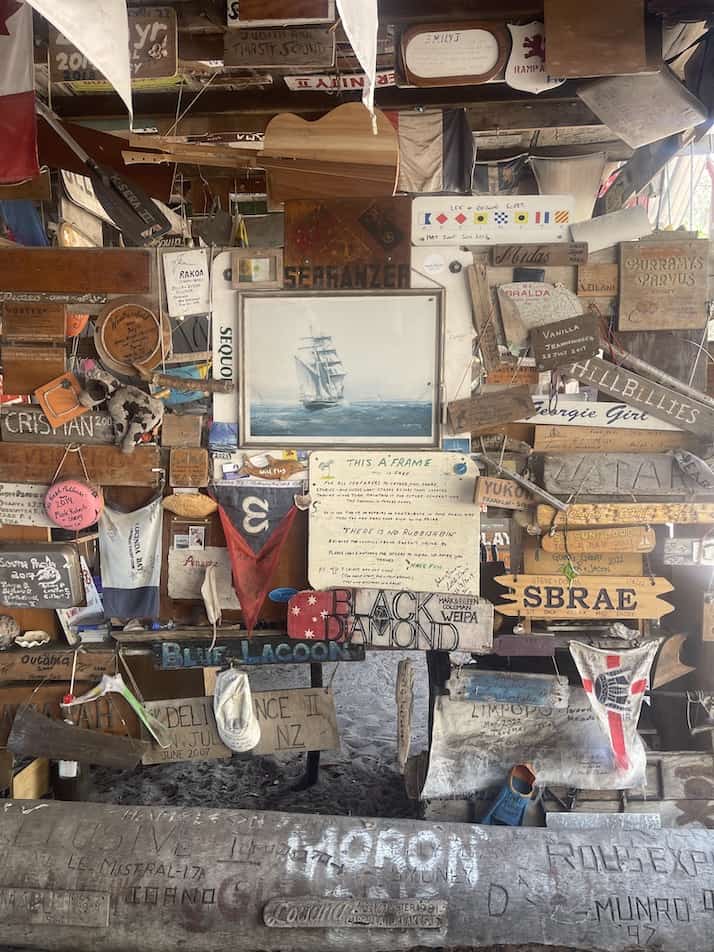
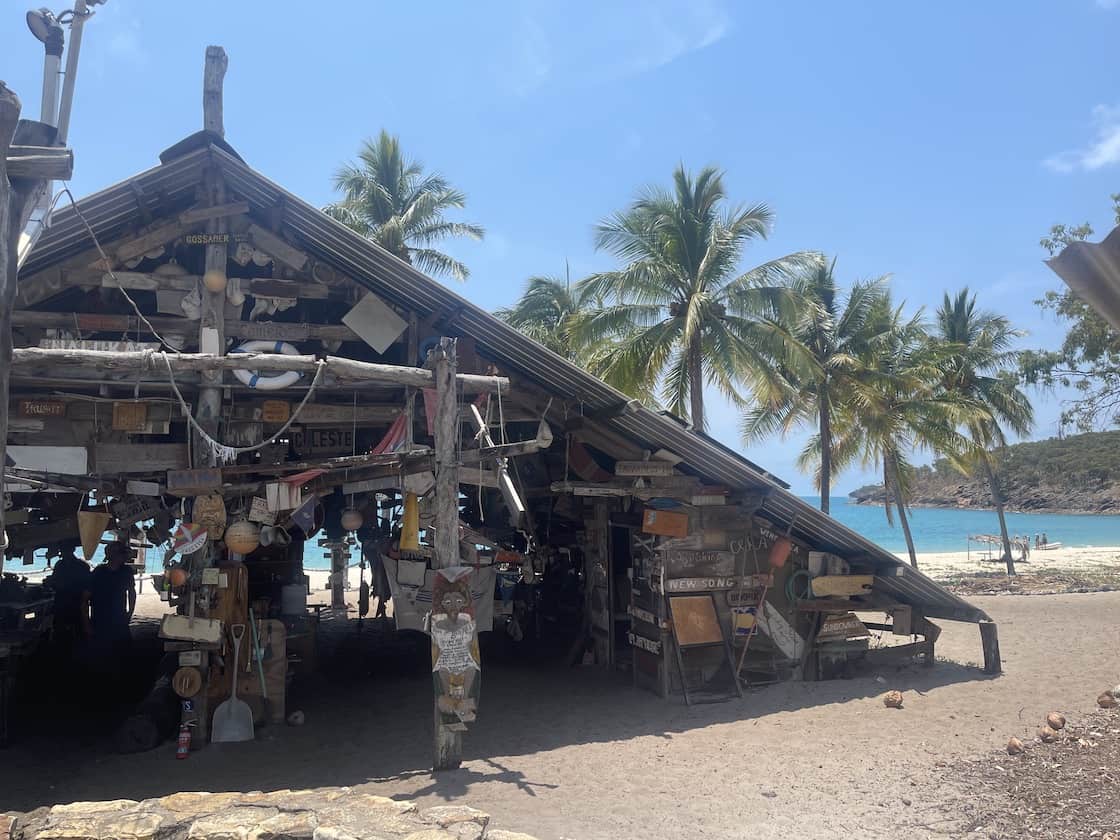
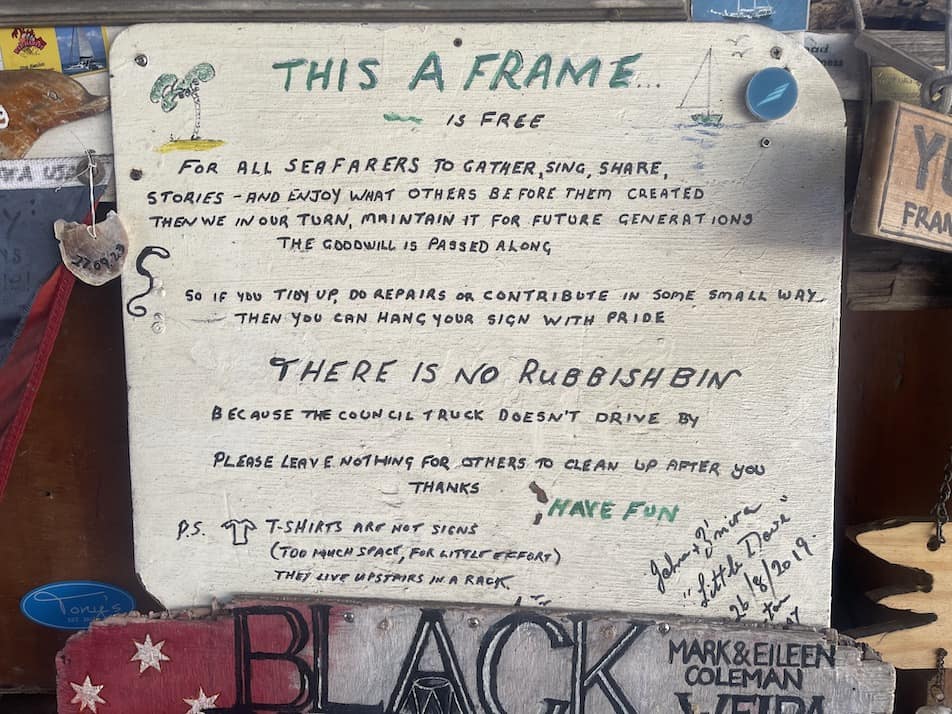
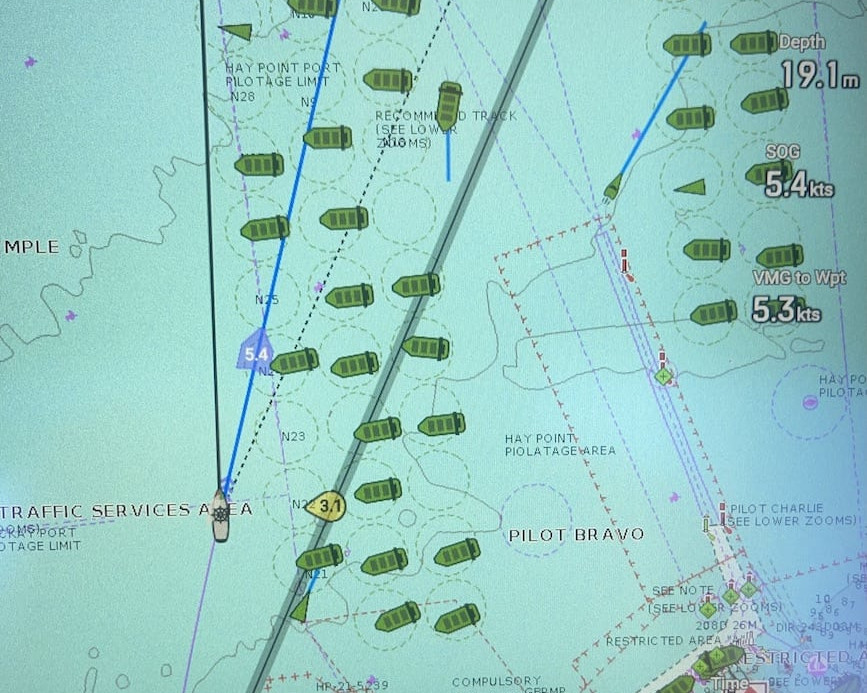
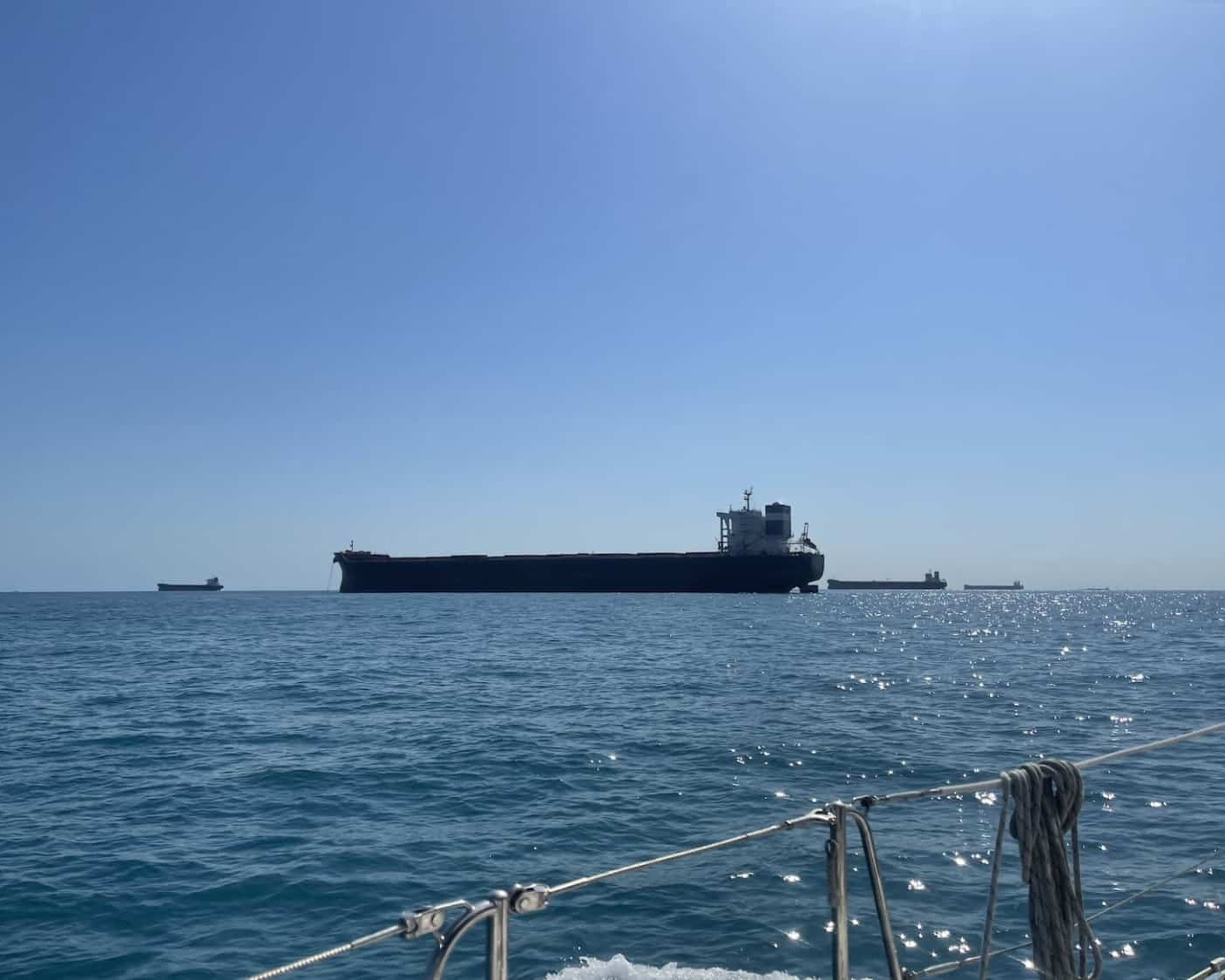
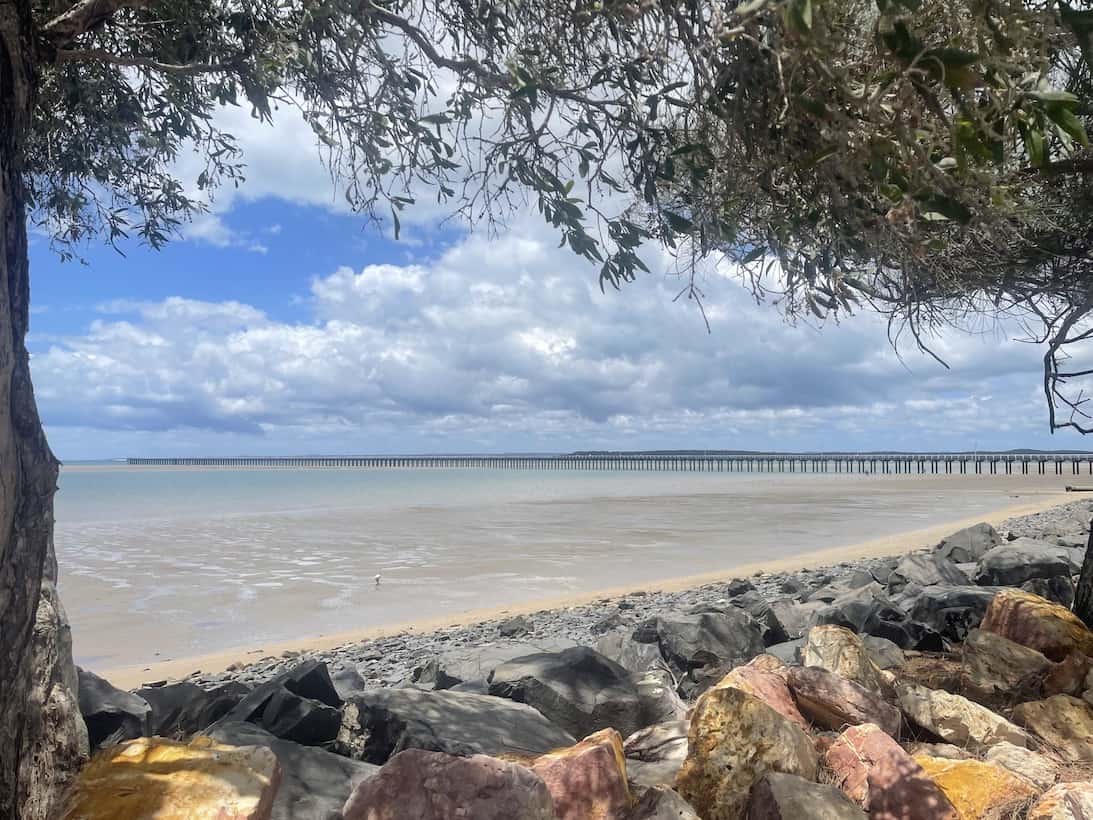
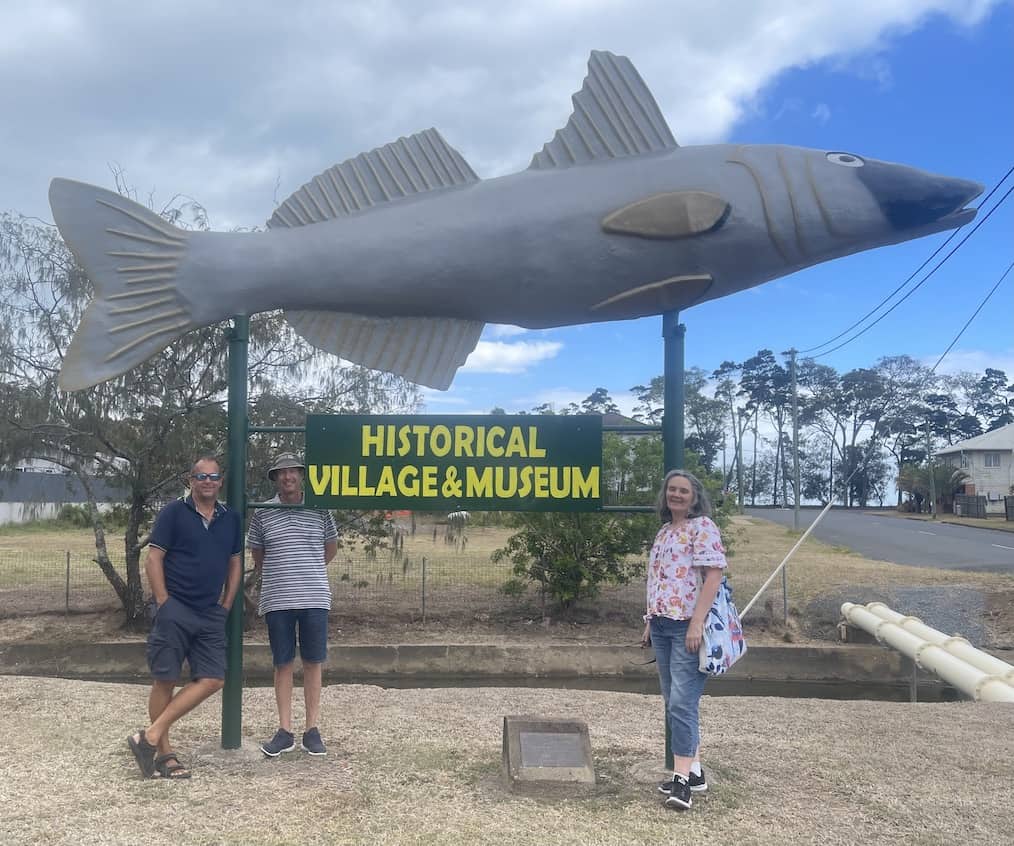
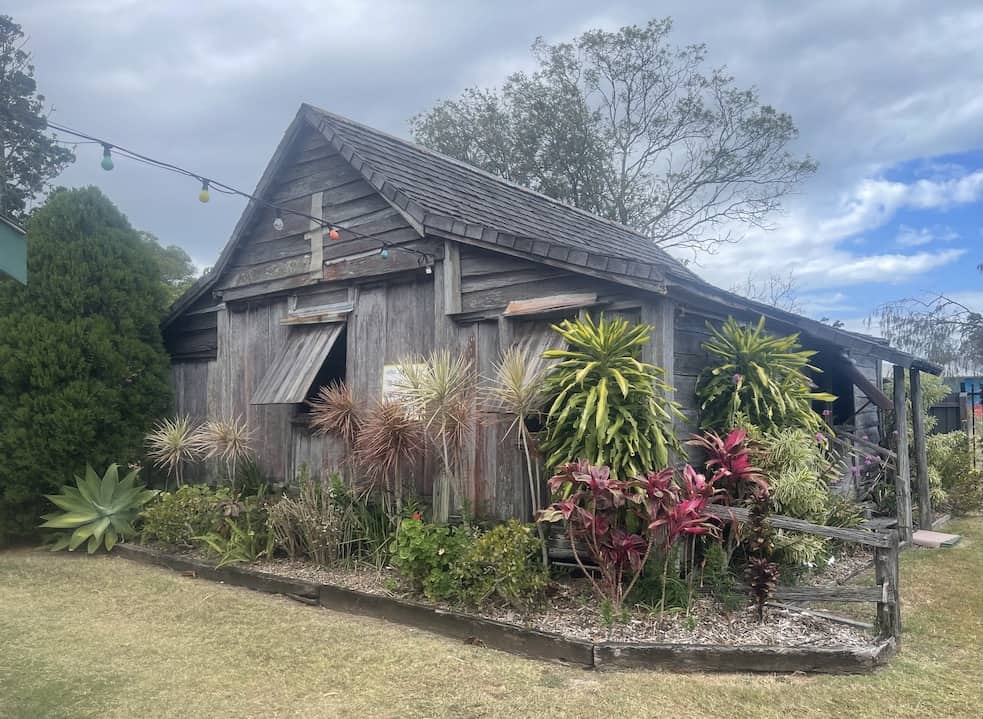
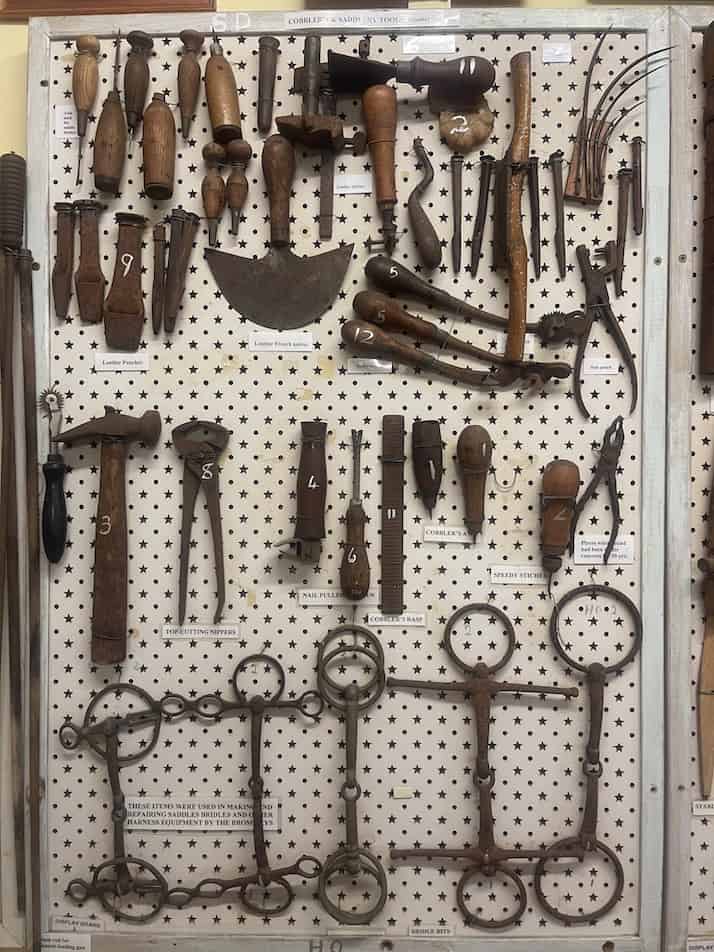
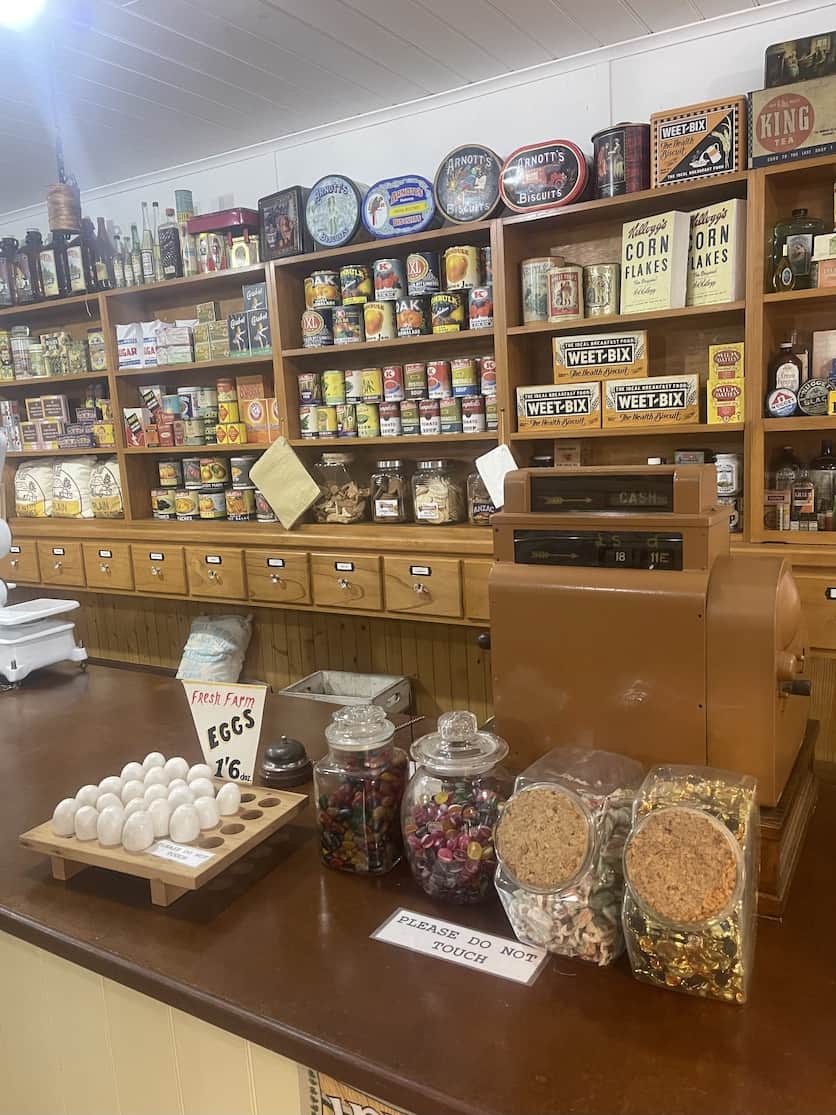
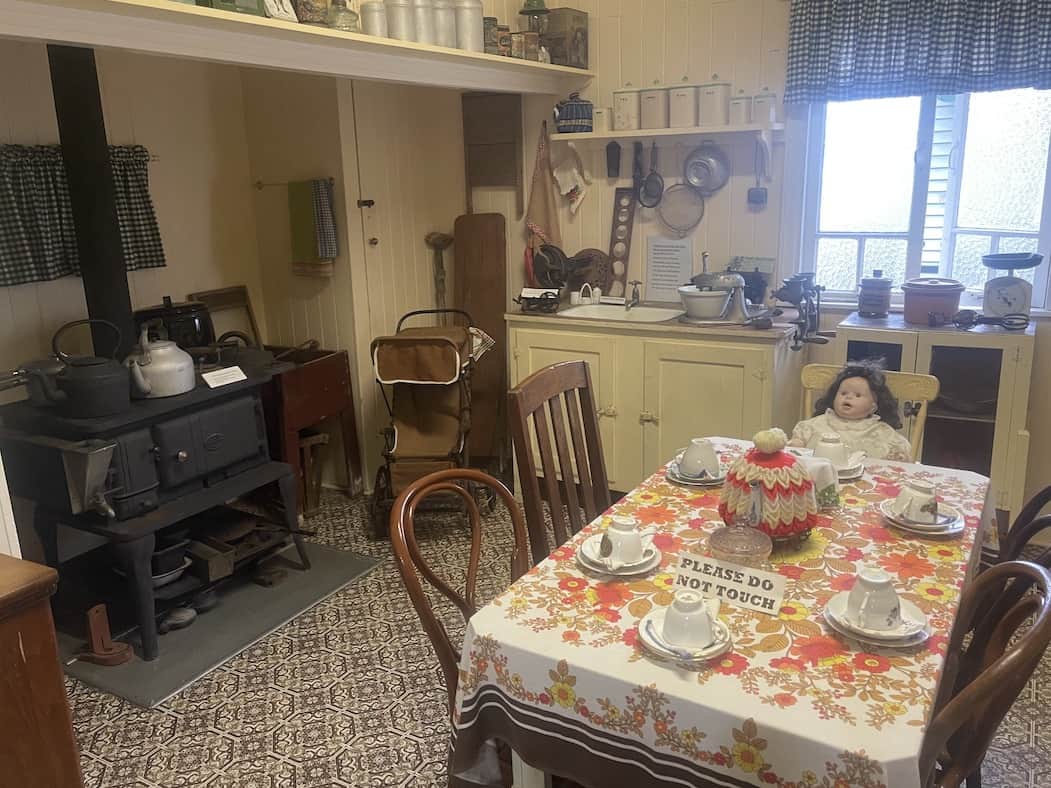

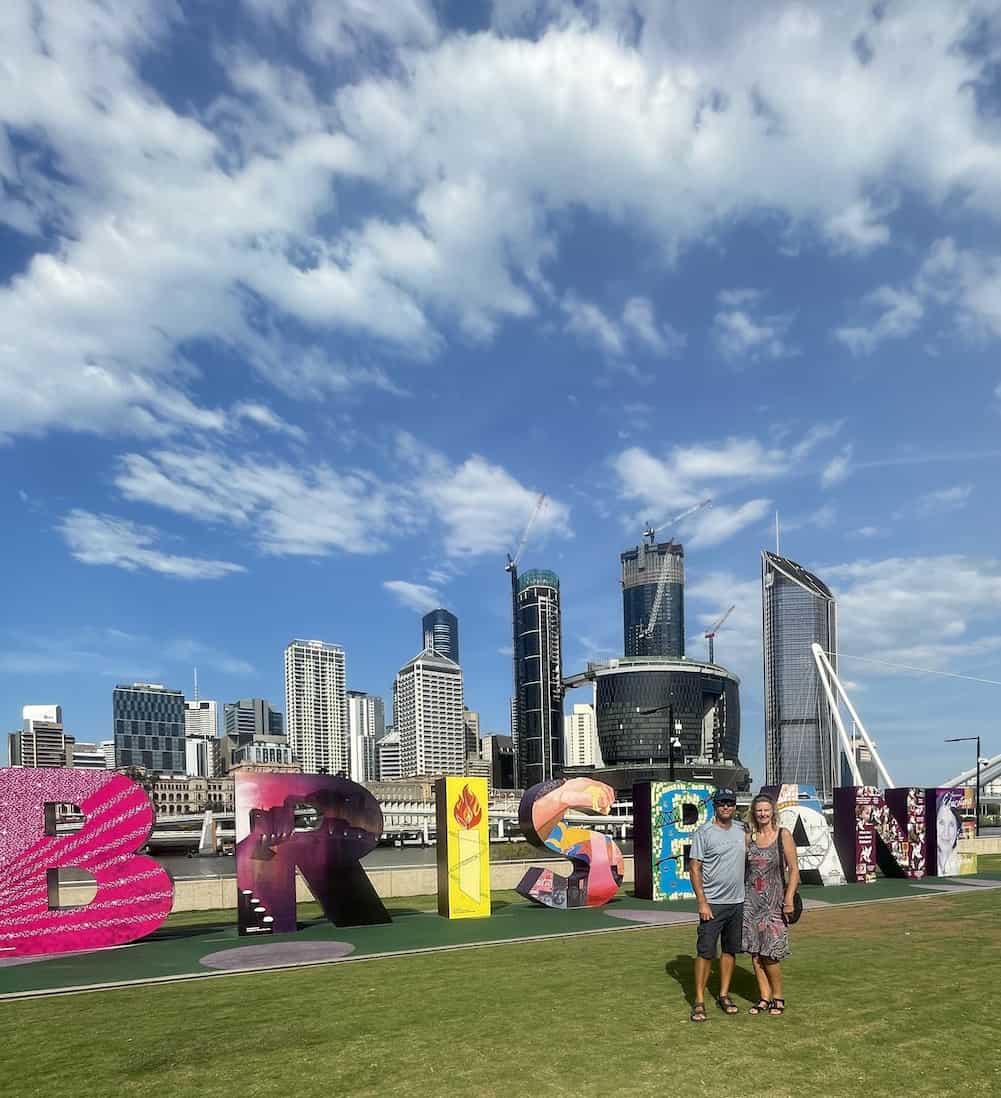
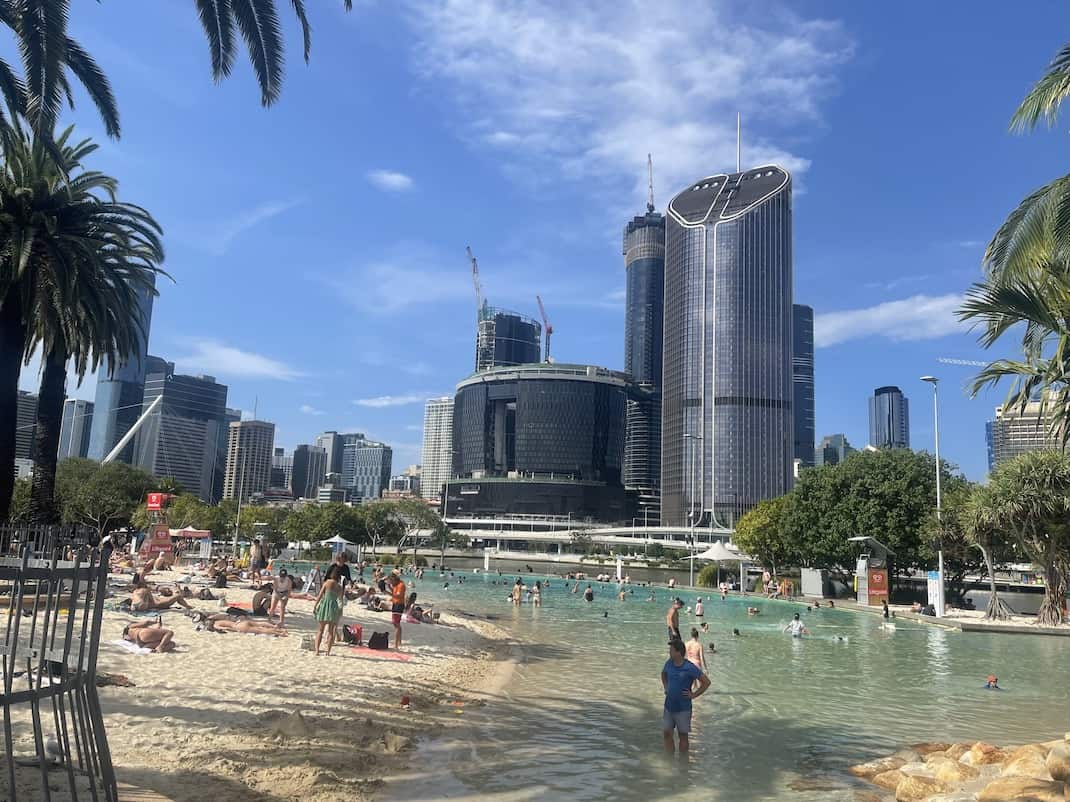
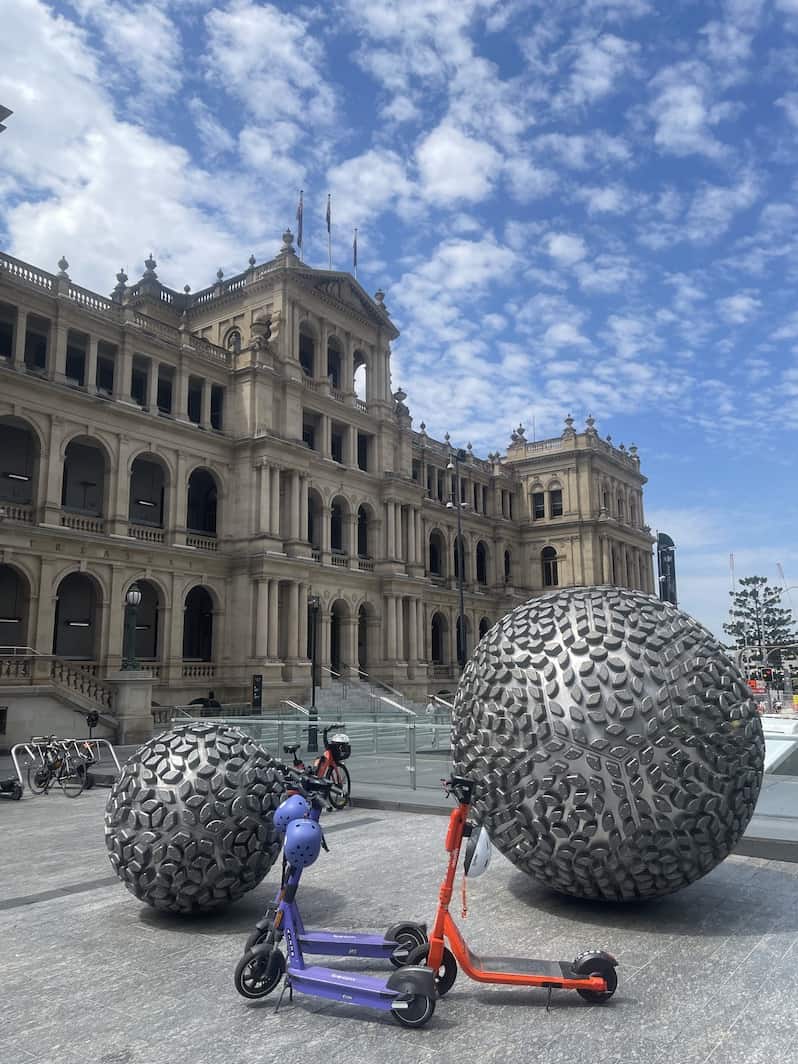
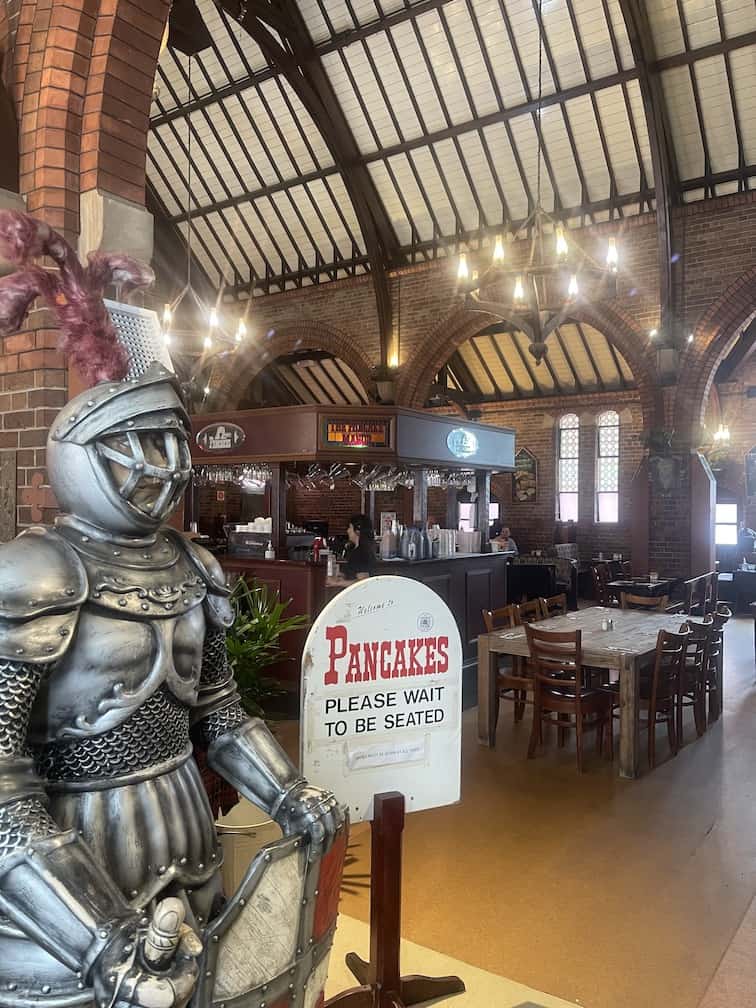
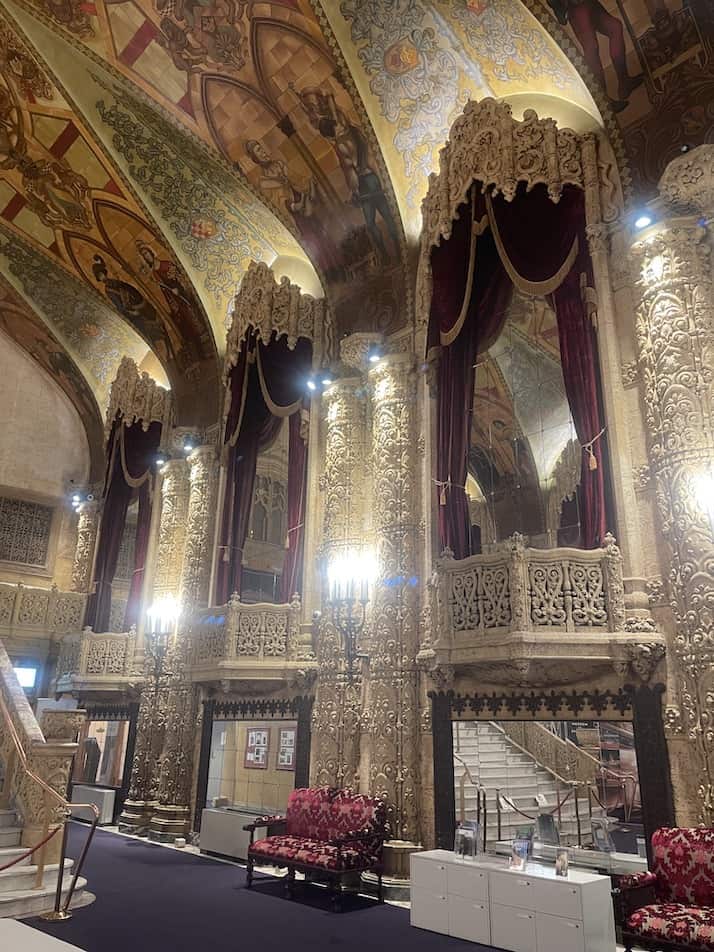
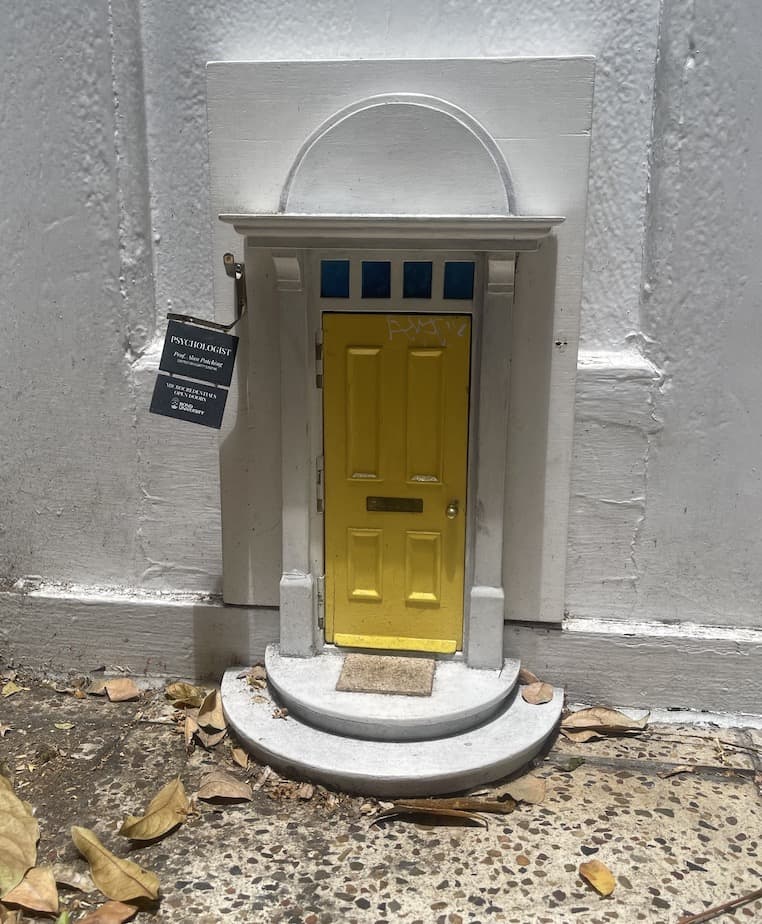
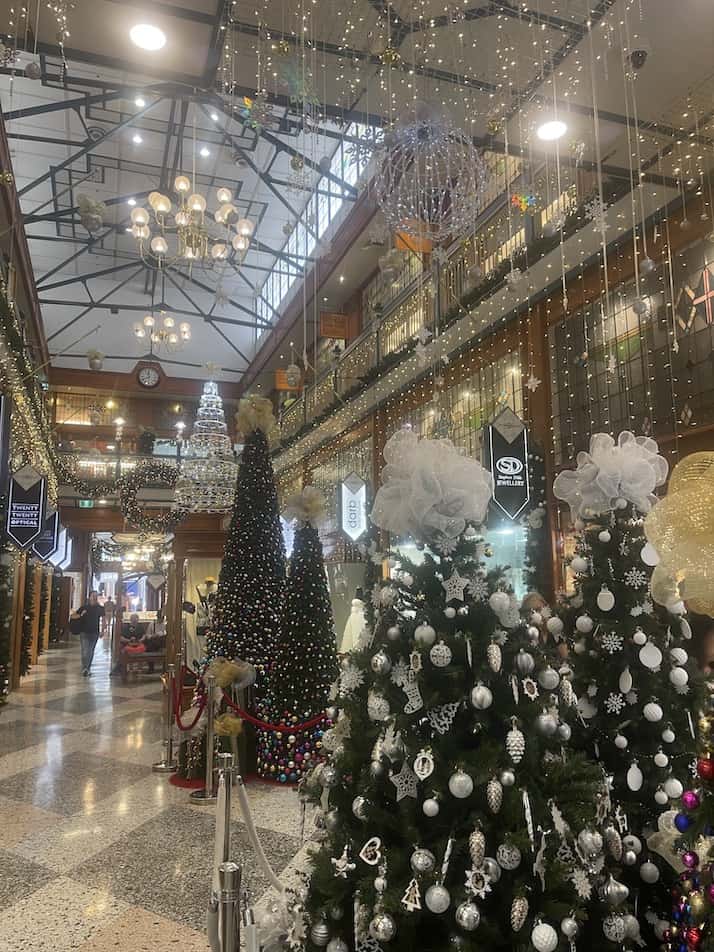
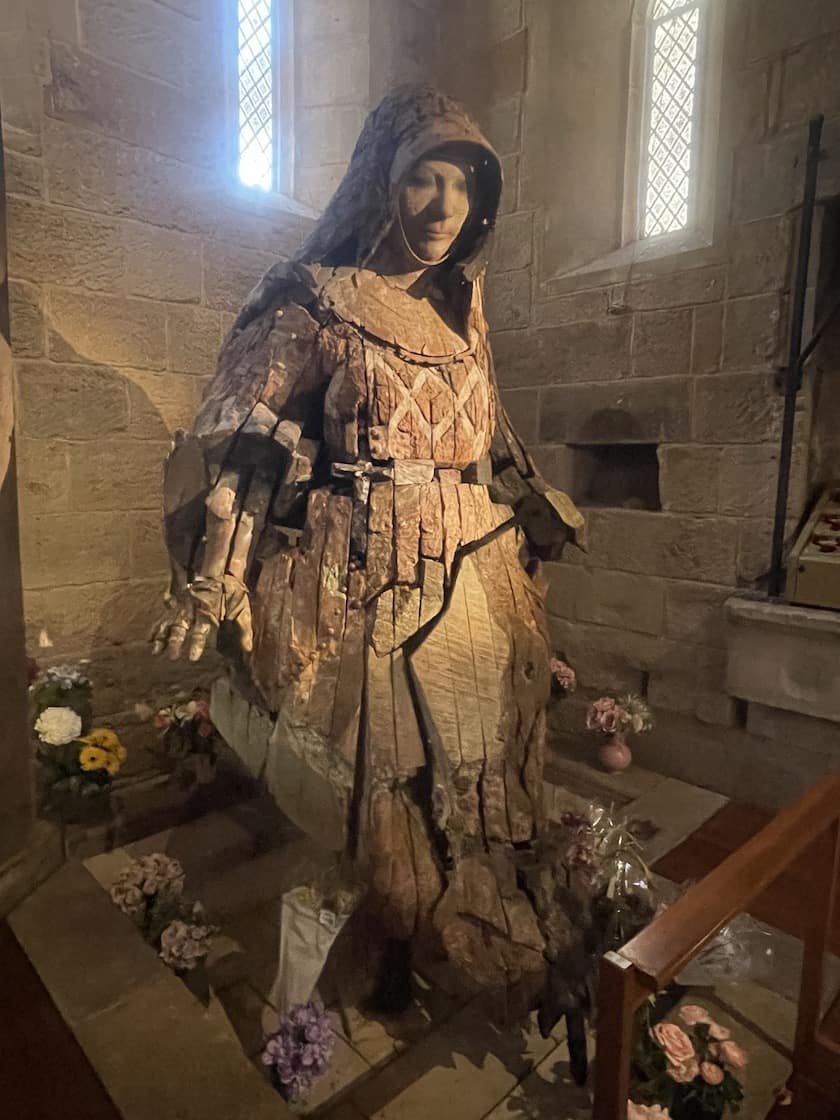
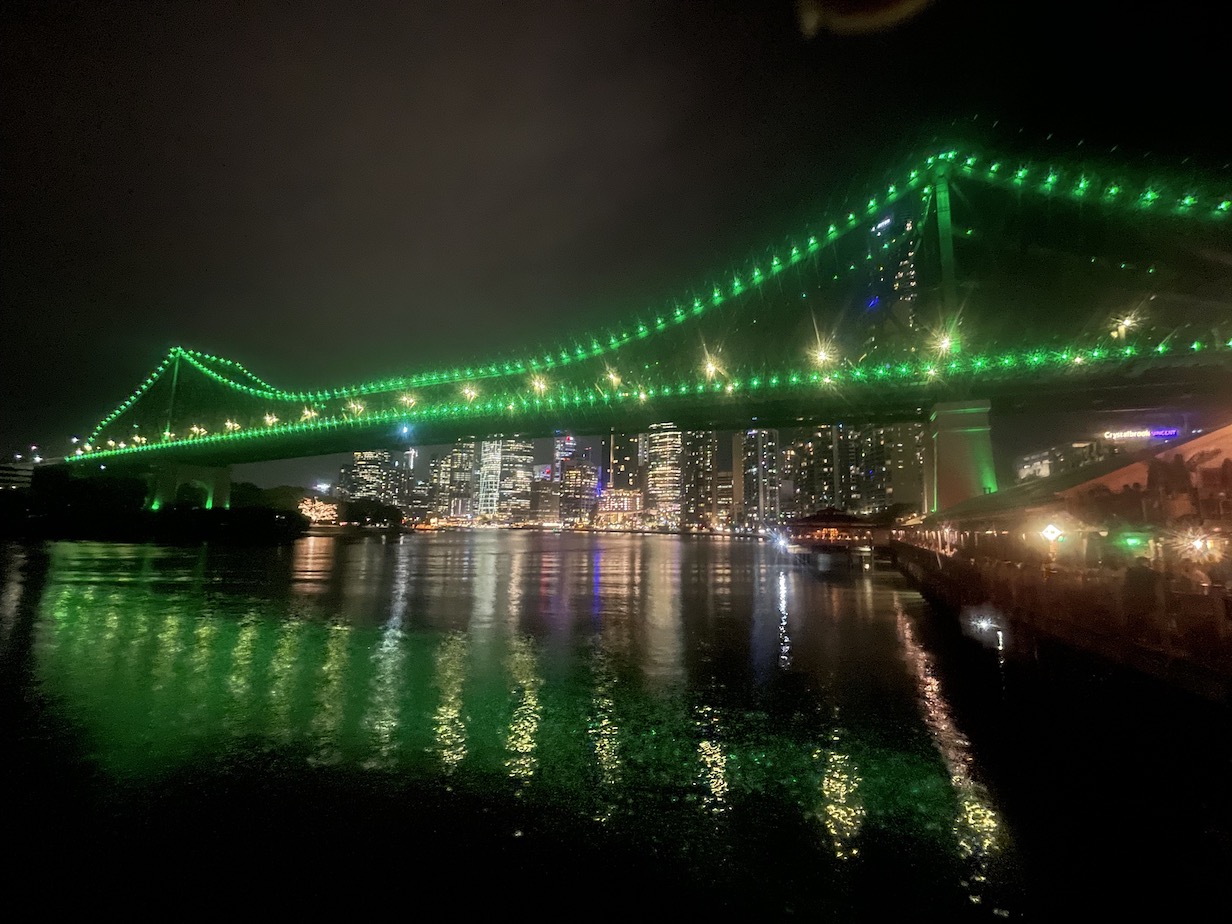
Fascinating as always!
Thank you! We like to share.
Keep the blogs coming. It is just like being there with you.
Thank you. it is good to hear that you are still enjoying reading about our travels. More to come..